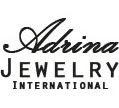It
was absolutely a kind of luxury for women to refine themselves with jewelry during the 17th
century. The form of arts and innovations in this
period is described as “Baroque”. The jewelry that
distinguishes Baroque tended to be linear in design and mono tone in color. Bow and flower were the dominant motifs.
The 17th century marked an increase
in the brandishing of jewelry that spread all over Europe. Large breast
ornaments, jeweled pins and hairpieces designed with
the finest and most extravagant jeweled pieces show
new enthusiasm for impressive accessories that courts wore with regalia. Instead
of wearing a bevy of jeweled pieces, rich people
started wearing stunningly high-quality pieces. Louis XIV was the
King of France, who wore jewelry to great excess in history.
Gold jewelry was
extravagantly worn in this era. It was often
decorated profusely with gemstones or suites of diamonds worn
at
weddings and social occasions. Brazil became the main
source of diamonds. With the improving gem cutting technique, diamonds became
apparent from basic point-and-table cut to the brilliant. Lighter and
airier pieces of gemstones started
being made to displace the large formal clusters of the gold-and-enamel
craftsmanship prevailed in the 16th century. Jewelry of such kind
was mostly imported from Hungary. And its skilled
craftsmen came mostly from London, Soho, Covent Garden
and Spitalfields in Britain.
Pearl necklace was fashionable neck ornament.
Its popularity is proofed
by its images appeared ubiquitously in the contemporary portraits, notably in
the works of Anthony van Dyck (1599-1641) and written materials. Pearls
threaded into chokers, multiple-strands necklaces or long rope, with large
gem-set pendants or fringes of pear-shaped pearl-drops sometimes. It was common
for wearers to fasten the necklaces with ribbon tie. By the end of the century,
they appeared with fastenings of gem-set clasps.
Large amount of pearls were also
made into necklaces or into wide bracelets (worn in pairs) or used in hair
ornaments by royal households.
Its profusion can be up to 2,000 large
pearls or over 4,000 seed
pearls on a single rope.











